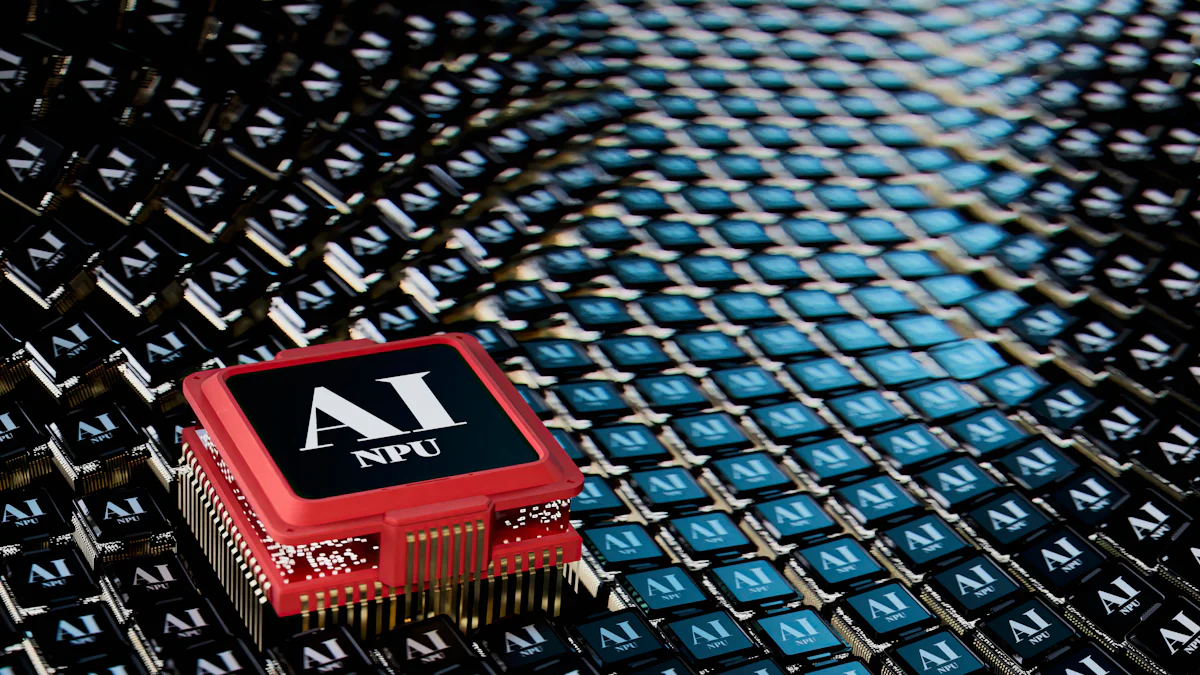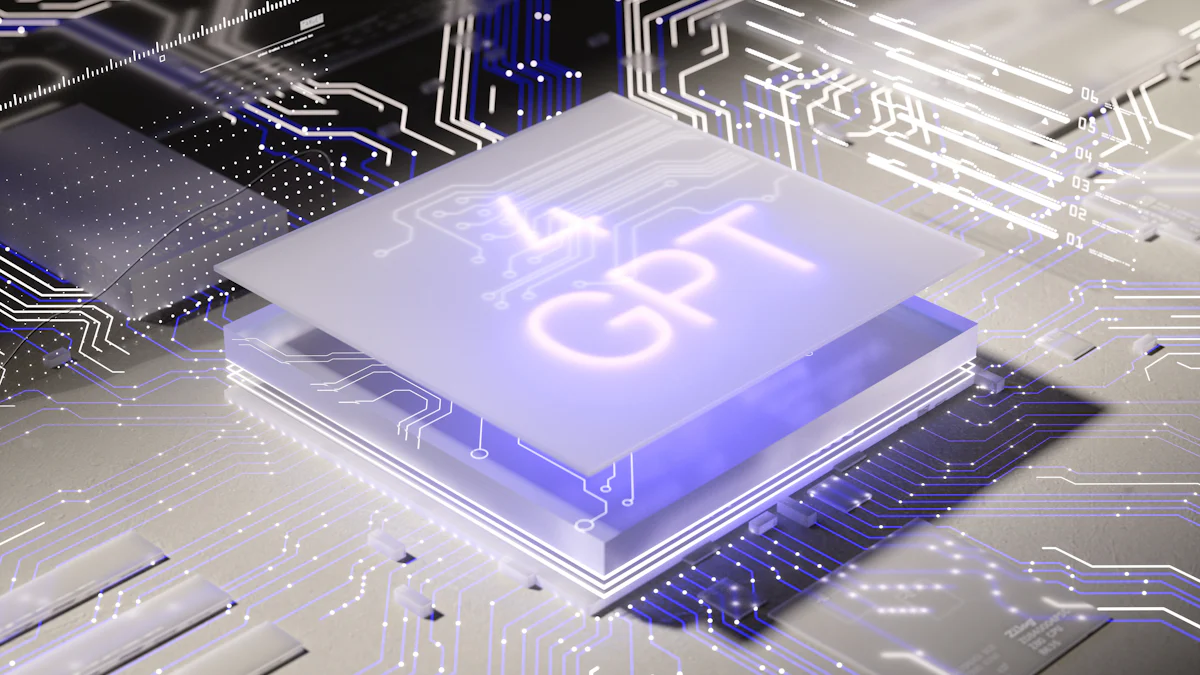Semiconductor Market Trends and Analysis for 2024

The semiconductor industry plays a pivotal role in modern technology. Understanding market trends for 2024 is crucial for stakeholders to navigate this dynamic landscape. The purpose of this comprehensive analysis is to provide insights into the factors driving growth and the challenges that lie ahead.
Comprehensive Analysis of Current Market Trends
Growth in Semiconductor Demand
Factors Driving Demand
The semiconductor market experiences significant growth due to several factors. The increasing adoption of consumer electronics, such as smartphones and wearables, drives demand. The automotive industry's shift towards electric vehicles and autonomous driving technologies also contributes to this surge. Additionally, the rise of industrial applications, including manufacturing automation and robotics, further boosts semiconductor demand.
Key Market Segments
Key market segments include memory, logic, and micro components. Memory and logic sectors are projected to soar, with each expected to exceed $200 billion by 2025. The micro components market is set to grow by $30.8 billion from 2024-2028. Integrated Circuits dominate the market, contributing significantly to revenue projections.
Technological Advancements
Innovations in Chip Design
Innovations in chip design play a crucial role in the semiconductor industry's evolution. Advanced chip designs enhance performance and efficiency, meeting the growing demands of various applications. These innovations include smaller node sizes, increased transistor density, and improved power efficiency.
Impact of AI and Machine Learning
Artificial Intelligence (AI) and Machine Learning (ML) significantly impact the semiconductor market. The proliferation of generative AI fuels the demand for AI-chips. These technologies drive advancements in data processing, enabling faster and more efficient computations. AI and ML applications span across industries, from healthcare to finance, further boosting semiconductor demand.
Geopolitical Influences
Trade Policies
Trade policies greatly influence the semiconductor market. Tariffs and trade restrictions impact the supply chain, affecting the availability and cost of semiconductor components. Geopolitical tensions between major economies can lead to shifts in production and distribution strategies.
Regional Market Dynamics
Regional market dynamics vary significantly. The Asia Pacific region dominated the global semiconductor market in 2023 and is expected to maintain its dominance. This region benefits from a large consumer base, rising disposable income, and increased demand for industrial processing and consumer electronics. In contrast, Japan and Europe experienced declines in sales, highlighting regional disparities.
Predictions for 2024

Market Forecasts
Revenue Projections
The semiconductor industry will experience robust growth in 2024. Revenue projections indicate the market will reach $607.40 billion. Integrated Circuits will dominate, contributing significantly to overall revenue. The memory and logic sectors will each exceed $200 billion by 2025. The global semiconductor market size will grow by USD 112.8 billion from 2024-2028.
Growth Rates
The semiconductor market will witness a compound annual growth rate (CAGR) of 3.42% during the forecast period. The industry will surpass the peak of 2022, setting new records. The semiconductor manufacturing equipment sector will also see growth, with sales reaching $109 billion in 2024. The CAGR for the semiconductor market will continue at 7.1% from 2023-2030.
Emerging Technologies
5G and IoT
5G technology will drive significant advancements in the semiconductor industry. The proliferation of 5G networks will increase demand for semiconductors. Internet of Things (IoT) devices will also contribute to this surge. These technologies will enhance connectivity and data processing capabilities. The integration of 5G and IoT will revolutionize various industries, including healthcare and automotive.
Quantum Computing
Quantum computing will emerge as a transformative technology in 2024. Semiconductor companies will invest in research and development for quantum chips. These chips will offer unprecedented computational power and efficiency. Quantum computing will enable breakthroughs in fields such as cryptography and material science. The semiconductor industry will play a crucial role in advancing quantum technologies.
Investment Trends
Venture Capital and Funding
Venture capital will flow into the semiconductor sector in 2024. Startups focusing on AI, edge computing, and sustainability will attract significant funding. Investors will seek opportunities in emerging technologies and innovative solutions. The semiconductor industry's potential for high returns will drive venture capital interest. Companies that embrace cutting-edge technologies will lead the market.
Mergers and Acquisitions
Mergers and acquisitions will shape the semiconductor landscape in 2024. Companies will pursue strategic partnerships to enhance their capabilities. Acquisitions will enable firms to expand their market presence and technological expertise. The consolidation of resources will drive innovation and efficiency. The semiconductor industry will see increased collaboration and integration.
Key Drivers
Consumer Electronics
Smartphones and Wearables
Smartphones and wearables drive significant demand in the semiconductor market. The proliferation of advanced features in smartphones, such as high-resolution cameras and enhanced processing power, requires sophisticated semiconductors. Wearable devices, including smartwatches and fitness trackers, also rely on semiconductors for their functionality. The integration of health monitoring and connectivity features in wearables further boosts semiconductor demand.
Home Automation
Home automation technologies contribute to the growing need for semiconductors. Smart home devices, such as thermostats, security systems, and lighting controls, depend on semiconductors for their operation. The increasing adoption of voice-activated assistants and interconnected home ecosystems enhances the demand for these components. The trend towards energy-efficient and automated homes will continue to drive semiconductor consumption.
Automotive Industry
Electric Vehicles
Electric vehicles (EVs) represent a major driver for the semiconductor industry. The shift towards sustainable transportation solutions necessitates advanced semiconductor technologies. EVs require semiconductors for battery management systems, power electronics, and charging infrastructure. The push for higher efficiency and longer battery life in EVs will further increase semiconductor usage.
Autonomous Driving
Autonomous driving technologies significantly impact semiconductor demand. Self-driving cars rely on a multitude of sensors, processors, and communication systems, all of which require semiconductors. The development of advanced driver-assistance systems (ADAS) and fully autonomous vehicles will accelerate the need for high-performance semiconductors. The automotive industry's focus on safety and innovation will continue to propel semiconductor growth.
Industrial Applications
Manufacturing Automation
Manufacturing automation drives substantial demand for semiconductors. Automated production lines and industrial robots depend on semiconductors for control and operation. The integration of AI and machine learning in manufacturing processes enhances efficiency and precision, further increasing semiconductor requirements. The push for smart factories and Industry 4.0 initiatives will sustain this demand.
Robotics
Robotics applications contribute to the rising need for semiconductors. Industrial robots, used in various sectors such as automotive, electronics, and pharmaceuticals, require advanced semiconductors for their functionality. The adoption of collaborative robots (cobots) and service robots in logistics and healthcare also boosts semiconductor consumption. The continuous advancements in robotic technologies will drive further growth in the semiconductor market.
Challenges and Opportunities

Supply Chain Issues
Component Shortages
The semiconductor industry faces significant challenges due to component shortages. Geopolitical volatility disrupts the supply chain, causing delays in production. Trade conflicts between major economies exacerbate these shortages. Extreme weather events also impact the availability of raw materials. The post-COVID era presents additional hurdles, such as labor shortages and increased demand for electronic devices.
Logistics and Distribution
Logistics and distribution present another set of challenges. Transportation disruptions affect the timely delivery of semiconductor components. Global supply chain vulnerabilities become evident during crises. Efficient logistics management becomes crucial to mitigate these risks. Companies must invest in advanced technologies to streamline distribution processes. Real-time tracking and predictive analytics can enhance supply chain resilience.
Regulatory and Compliance
Environmental Regulations
Environmental regulations impose stringent requirements on the semiconductor industry. Climate change drives the need for sustainable practices. Companies must adhere to guidelines that reduce carbon emissions and waste. The push for eco-friendly manufacturing processes gains momentum. Compliance with environmental standards becomes a competitive advantage. Firms that prioritize sustainability will lead the market.
Data Privacy Laws
Data privacy laws impact the semiconductor sector significantly. Governments worldwide implement strict regulations to protect consumer data. The semiconductor industry must ensure compliance with these laws. Advanced encryption and security measures become essential. Companies must invest in robust cybersecurity frameworks. Non-compliance can result in severe penalties and loss of consumer trust.
Market Opportunities
Untapped Markets
Untapped markets present lucrative opportunities for the semiconductor industry. Emerging economies exhibit growing demand for electronic devices. The expansion of digital infrastructure fuels this growth. Companies can capitalize on these markets by offering affordable and innovative solutions. Strategic market entry plans become essential for success. Localization strategies can enhance market penetration.
Strategic Partnerships
Strategic partnerships drive growth in the semiconductor sector. Collaborations with technology firms can lead to innovative product development. Joint ventures with automotive companies can enhance semiconductor applications in electric vehicles. Partnerships with research institutions can accelerate advancements in quantum computing. These alliances foster knowledge sharing and resource optimization. The semiconductor industry will benefit from increased collaboration and integration.
Comprehensive Analysis of JUSDA's Role in the Semiconductor Supply Chain
JUSDA's Supply Chain Solutions
End-to-End Services
JUSDA offers comprehensive end-to-end supply chain solutions. These services encompass multimodal transportation and cloud warehousing. Efficient distribution networks ensure the seamless movement of semiconductor components from manufacturers to end consumers. JUSDA's solutions help mitigate delays and reduce costs, ensuring timely delivery of semiconductor products.
Technological Integration
JUSDA integrates advanced technologies into its supply chain solutions. The use of big data, IoT, and cloud platforms supports complex and variable customer demands. These technological integrations enhance efficiency and precision in supply chain management. JUSDA's JusLink platform enables real-time collaborative platforms and intelligent supply chain systems. This system optimizes resource utilization and business decision-making.
JUSDA's Global Presence
Service Points and Warehousing
JUSDA operates 155 service points worldwide. The company manages over 2.5 million square meters of warehousing space. This extensive network supports the global distribution of semiconductor components. JUSDA's warehousing facilities ensure the safe and efficient storage of products. The company's global presence enhances its ability to meet customer demands promptly.
International Service Routes
JUSDA maintains more than 2,000 international service routes. These routes facilitate the global movement of semiconductor components. Efficient logistics management ensures timely delivery across various regions. JUSDA's international service routes enhance supply chain resilience. The company's global reach supports its role as a leading supply chain technology management platform.
JUSDA's Competitive Advantages
Real-Time Collaborative Platforms
JUSDA's JusLink platform provides real-time collaborative platforms. This system integrates suppliers, manufacturers, service providers, and customers. Real-time collaboration enhances communication and coordination across the supply chain. JUSDA's platform supports efficient resource utilization and precise business decision-making. This competitive advantage strengthens JUSDA's position in the semiconductor supply chain.
Intelligent Supply Chain Systems
JUSDA leverages intelligent supply chain systems to optimize operations. These systems use advanced technologies such as AI and machine learning. Intelligent supply chain systems enhance efficiency and accuracy in logistics management. JUSDA's innovative approach supports the seamless movement of semiconductor components. This competitive advantage ensures JUSDA's leadership in supply chain technology management.

JUSDA Solutions
To provide you with professional solutions and quotations.
The semiconductor market in 2024 will experience robust growth driven by advancements in AI, 5G, and quantum computing. Key findings highlight significant revenue projections, with the market reaching $607.40 billion. Stakeholders must navigate supply chain challenges and leverage emerging technologies for competitive advantage. The industry should focus on sustainability and compliance with environmental regulations. Strategic partnerships and investments in innovation will shape the future landscape. Industry stakeholders must adapt to these trends to capitalize on opportunities and mitigate risks.
See Also
Revealing How Technology Shapes Market Trends
Enhancing Supply Chain Performance with 5 Key Trends
Insider Tips for Semiconductor Industry Quality Assurance
Achieving Supply Chain Success via Market Trends in 5 Steps
The Influence of Customer Demands on JUSDA's Market Strategies
